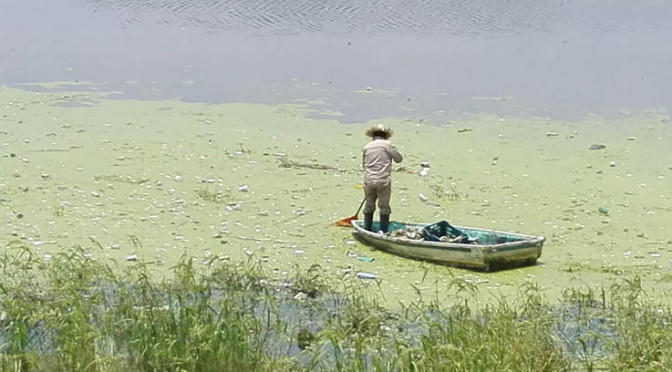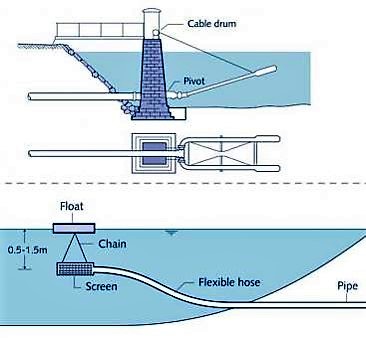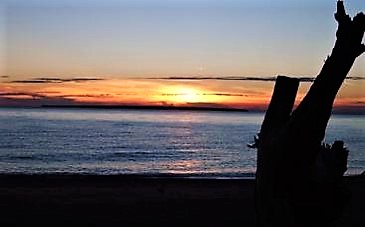Lakes are surface water sources, with water levels changing depending on the seasons. Lakes usually play an important role in the supply of water for the regional population (household use), industry and agriculture. Lake management has to consider that the amount of water extracted is not higher than water entering the lake; pollution and eutrophication; as well as sedimentation to guarantee an ecological balance and a constant quality of water for use. There are natural lakes and man-made lakes, also called reservoirs.
| Entradas | Salidas |
|---|---|
Freshwater, Drinking Water |
Lakes, like every surface water source, are very important for water supply in communities, cities, agriculture and industry. Lakes exist as two types of surface water sources: as natural lakes, and as artificial lakes (also called reservoirs). Normally, lakes are fed and drained by rivers or streams, but are also supplied by precipitation run-off (see also the water cycle). Even though surface water and ground water are usually evaluated as separate water masses, they interact depending on physiographic and climatic setting of the landscape (U.S. EPA 2000). Physical impairments to water quality include a variety of parameters, such as temperature, turbidity and pH (acidity) and they describe the general condition of the water and its ability to support aquatic life. The following table lists the most common physical water quality parameters measured and compares the characteristics of surface water and groundwater based on these parameters.
| Characteristic | Ground Water | |
| Varies with season | Relatively constant | |
| Turbidity, Suspended Solids (SS) | Level variable, sometimes high | Low or nil (except in karst soil) |
| Colour | Due mainly to SS (clays, algae) except in very soft or acidic waters (humic acids) | Due above all to dissolved solids |
| Mineral content | Varies with soil, rainfall, effluents, etc. | Largely constant, generally appreciably higher than in surface water from the same area |
| Divalent Fe and Mn in solution | Usually none, except at the bottom of lakes and ponds in the process of eutrophication | Usually present |
| Aggressive CO2 | Usually none | Often present |
| Dissolved O2 | Often near saturation level, absent in very polluted water | Usually none |
| Hydrogen Sulfide H2S | Usually none | Often present |
| Ammonium NH4 | Found only in polluted water | Often found |
| Nitrates | Level generally low | Level sometimes high |
| Silica | Usually moderate proportions | Level often high |
| Mineral and organic micro-pollutants | Can be present but liable to disappear rapidly once the source is removed | Usually none but any accidental pollution lasts a very long time |
| Living organisms | Bacteria, viruses, plankton | Iron bacteria frequently found |
| Chlorinated solvents | Rarely present | Often present |
| Eutrophic nature | Often. Increased by high temperatures | None |
Table 1: Physical characteristics of surface water and groundwater. Source: LENNTECH (2012)

When humans disturb the natural, protective vegetative cover of the landscape with settlements, roads, farms, etc., the types and amounts of materials dissolved or carried into the lakes by runoff change significantly (WATERENCYCLOPEDIA 2011). Nonpoint-source pollution is another term for polluted runoff (see also water pollution). Run-off is the water washing over the land, whether from precipitation, car washing or watering crops or lawns, etc., picks up an array of contaminants including oil, sand and salt from roadways, agricultural chemicals, and nutrients and toxic materials from both urban and rural areas. The term nonpoint is used to distinguish this type of pollution from point source pollution, which comes from specific sources such as sewage treatment plants or industrial facilities. The major types of pollutants are listed below (adapted from COASTAL CENTRE 2012):
- Nutrients are compounds that stimulate plant growth, like nitrogen and phosphorous. In high concentrations, they can become both an environmental and health threat. Nutrients in polluted waters can come from agricultural fertilisers, septic systems, home lawn care products, and yard and animal wastes.
- Pathogens are disease-causing microorganisms, such as bacteria and viruses that come from the faecal waste of animals and humans. Pathogens wash off the land from wild animal, farm animal and pet waste, and can also enter the lake from improperly functioning septic systems, leaky sewer lines and boat sanitary disposal systems.
- Toxins are substances that can harm aquatic and human life. They are created by a wide variety of human practices and products like heavy metals, pesticides and organic compounds like PCB’s. Many toxins are resistant to breakdown and tend to be passed through the food chain to be concentrated in top predators. Oil, grease and gasoline from roadways, and chemicals used in home, gardens, yards and on farm crops, are major sources of toxic contaminants.
Eutrophication

Excessive fertilisation (eutrophication) of lakes and reservoirs is recognised as one of the most important causes of water quality impairment of lakes, reservoirs, some streams, rivers, and near-shore marine waters (JONES LEE and LEE n.y.); see also water pollution. Eutrophication of lakes is best defined as the excessive addition of inorganic nutrients, organic matter, and silt that causes a corresponding increase in biological productivity. High concentrations of nutrients alone do not make a lake eutrophic; there must be a biological response as well. Nutrient concentrations, however, may be used as indicators for the potential of eutrophication. For example, phosphorus concentrations exceeding 30 micrograms per litre are sufficient to cause excessive algal growth in some lakes, and therefore eutrophication (WATERENCYCLOPEDIA 2011). Possible solutions to avoid eutrophication are wastewater treatment at the source, retention ponds to stop nutrients before entering the surface water source or buffer zones between agricultural land and open water sources. In the United States for instance, industrial agriculture is one of the leading causes of water pollution. Read more about it in the article by SUSTAINABLE TABLE (n.y.)
How to Avoid Pollution
To avoid pollution, wastewater should be treated before discharged into surface water. Read more about the different options here. To avoid pollution from residential surface runoff, proper stormwater management should be implemented.

Water for household use can be extracted and distributed by buckets or pumped into water trucks to transport larger amounts of water. Before it is used it should be purified. Water can also be pumped into a distribution network. To extract large amounts of water for cities (drinking water), agriculture (irrigation) or industrial use (e.g cooling water or commercial fishing, hydropower), permanent water intakes are necessary. Another important technique to extract drinking water is called bank filtration. Surface water from river systems or lakes infiltrates through the soil, with acts as a purification filter, into the groundwater where it can be extracted.
The city of Zurich extracts 70% of its drinking water from Lake Zurich. There are two intakes in the lake at a depth of 30 metres (and approx. 500 m away from the shore) where the water has a constant temperature (6 to 8 °C) and does not interfere with commercial shipping. From there it is pumped to sedimentation pools and purified (sand filter, active carbon filter and ozone) before it is introduced into the drinking water network of the city (STADT ZUERICH 2012).
It does not matter if water is extracted from a water source for drinking or for irrigation, but the amount of water used must be less than the amount that is available in the source. To estimate the availability and to strengthen water management decision-making also see the factsheet water balance estimation.

A lake, especially in densely populated areas and arid regions, serves many uses (see also water use) and the potential for conflicts is high. Some of them are listed below:
- Drinking water source: Lakes are very big drinking water sources (e.g. Lake of Constance for Switzerland, Austria and Germany, or The Great Lakes in North America), making them significant economical factors for a region. The potential for conflicts is even higher in arid regions.
- Agriculture: Lakes (as well as reservoirs) are important water sources for irrigation.
- Energy production: A lake could be used as a reservoir for hydropower production (small- or large-scale).
- Tourism and recreation: In many cases, this is an important economic factor for the region (HAMMERL and GATTENLOEHNER n.y.). Tourists travel to a lake area for vacation (also day trips), sports or fishing.
- Wildlife and habitants: A lake and its wetlands are a natural ecosystem and habitat for many animals and plants (HAMMERL and GATTENLOEHNER n.y.).
- Shoreline constructions: In addition to the settlements and the transportation infrastructure, there are also recreational facilities, shoreline fortifications and excavations for sand and gravel (HAMMERL and GATTENLOEHNER n.y.).
- Fisheries: In many countries, people are dependent on a lake’s fishing grounds. Therefore, water quality should be adequate and (natural) spawning ground existent.
No potentially hazardous substances should be channelled into lakes, because the ecosystem services could be negatively influenced through water pollution which can cause waterborne diseases (see also water source and well protection). Wastewater treatment and semi-centralised drinking water treatments are important before further use (e.g. free surface, horizontal or vertical constructed wetlands).
The quality of lake water is influenced by self-purification through aeration, bio-chemical processes, and settling of suspended solids. The water can be very clear, of low organic content and with high oxygen saturation. Usually, human and animal pollution only presents a health hazard near the shore. At some distance from the shore, the lake water generally has a low density of pathogenic bacteria and viruses. However, algae may be present, particularly in the upper layers of lakes (SMET and WIJK 2002).
A lake is a very important water source for its region. The stored water can be used as drinking water after proper treatment or for irrigation. Furthermore, a lake is an important economical factor. Tourism, shipping, fisheries are some of the industrial sectors that benefit from a lake. Proper lake management is very important to avoid conflicts and pollution
Nonpoint Source Pollution
Eutrophication (Excessive Fertilization)
“Eutrophication” has become synonymous with “excessive fertilisation” or the input of sufficient amounts of aquatic plant nutrients to cause the growth of excessive amounts of algae and/or aquatic macrophytes in a water body such that beneficial uses of the water body (i.e., water quality) are impaired. Beneficial uses of water bodies that stand to be impaired by the presence of excessive amounts of aquatic plant life include domestic and industrial water supply, recreation, and fisheries. Because of the public health and environmental quality significance of these water quality impairments, myriad strategies have been advanced to evaluate and regulate excessive fertilisation.
JONES LEE, A. LEE, G.F. (n.y): Eutrophication (Excessive Fertilization). El Macero: G. Fred Lee & Associates URL [Visita: 24.01.2012] PDFProperties of groundwater
Small Community Water Supplies: Technology, People and Partnership: Surface Water - Chapter 11
This book provides a general introduction to a wide range of technologies. Among the topics covered are: planning and management of small water supplies, community water supplies in Central and Eastern European countries, water quality and quantity, integrated water resources management, artificial recharge, rainwater harvesting, spring water tapping, groundwater withdrawal, water lifting, surface water intake, water treatment, aeration, coagulation and flocculation, sedimentation, multi-stage filtration, desalination technology, disinfection, household level water treatment, technologies for arsenic and iron removal from ground water, and emergency and disaster water supply. Chapter 11: Surface Water
SMET, J. ; WIJK, C. van (2002): Small Community Water Supplies: Technology, People and Partnership: Surface Water - Chapter 11. The Hague: International Water and Sanitation Centre (IRC) URL [Visita: 29.02.2012] PDFIndustrial Agriculture Water Pollution
Industrial agriculture is one of the leading causes of water pollution in the United States today. In the 2000 National Water Quality Inventory conducted by the Environmental Protection Agency (EPA), agricultural activity was identified as a source of pollution for 48% of stream and river water, and for 41% of lake water. Read more about it in this article.
SUSTAINABLE TABLE (n.y): Industrial Agriculture Water Pollution. New York: Sustainable Table URL [Visita: 12.03.2012] PDFThe Impacts of Cultural Eutrophication on Lakes
High pollution in Guadalupe Lake, Mexico
Lake Management Issues
Sick Water? The central role of wastewater management in sustainable development
This book not only identifies the threats to human and ecological health that water pollution has and highlights the consequences of inaction, but also presents opportunities, where appropriate policy and management responses over the short and longer term can trigger employment, support livelihoods, boost public and ecosystem health and contribute to more intelligent water management.
CORCORAN, E. ; NELLEMANN, C. ; BAKER, E. ; BOS, R. ; OSBORN, D. ; SAVELLI, H. (2010): Sick Water? The central role of wastewater management in sustainable development. A Rapid Response Assessment. United Nations Environment Programme (UNEP), UN-HABITAT, GRID-Arendal URL [Visita: 05.05.2010] PDFControl of Water Pollution from Agriculture
Environmental pollution is a major global concern. When sources of water pollution are enumerated, agriculture is, with increasing frequency, listed as a major contributor. As nations make efforts to correct abuses to their water resources, there is a need to determine the causes of water quality degradation and to quantify pollution contributions from many sources. Until such time as adequate facts are made available through research to delineate causes and sources, conflicting opinions continue to flourish and programmes to control and abate pollution will be less effective and efficient in the use of limited resources.
FAO (1996): Control of Water Pollution from Agriculture. Rome: FAO: Food and Agriculture Organization of the United Nations (FAO) URL [Visita: 12.03.2012] PDFLake Ecosystems
Lakes are discrete, largely isolated ecosystems in which the interplay between physical, biogeochemical and organismal processes can be studied, understood, and put to use in effective management. Read more about it in this article.
HAIRSTON, N.G. FUSSMANN, G.F. (2002): Lake Ecosystems. New York: Macmillan Publishers Ltd URL [Visita: 14.12.2011]Understanding Lake Ecology
Limnology is the study of fresh or saline waters contained within continental boundaries. Limnology and the closely related science of oceanography together cover all aquatic ecosystems. Although many limnologists are freshwater ecologists, physical, chemical, and engineering limnologists all participate in this branch of science. Limnology covers lakes, ponds, reservoirs, streams, rivers, wetlands, and estuaries, while oceanography covers the open sea. Limnology evolved into a distinct science only in the past two centuries, when improvements in microscopes, the invention of the silk plankton net, and improvements in the thermometer combined to show that lakes are complex ecological systems with distinct structures. This document gives you a broad overview.
HORNE, A.J. GOLDMAN, C.R. (1994): Understanding Lake Ecology. New York: McGraw-Hill Co URL [Visita: 14.12.2011] PDFEutrophication (Excessive Fertilization)
“Eutrophication” has become synonymous with “excessive fertilisation” or the input of sufficient amounts of aquatic plant nutrients to cause the growth of excessive amounts of algae and/or aquatic macrophytes in a water body such that beneficial uses of the water body (i.e., water quality) are impaired. Beneficial uses of water bodies that stand to be impaired by the presence of excessive amounts of aquatic plant life include domestic and industrial water supply, recreation, and fisheries. Because of the public health and environmental quality significance of these water quality impairments, myriad strategies have been advanced to evaluate and regulate excessive fertilisation.
JONES LEE, A. LEE, G.F. (n.y): Eutrophication (Excessive Fertilization). El Macero: G. Fred Lee & Associates URL [Visita: 24.01.2012] PDFSmall Community Water Supplies: Technology, People and Partnership: Surface Water - Chapter 11
This book provides a general introduction to a wide range of technologies. Among the topics covered are: planning and management of small water supplies, community water supplies in Central and Eastern European countries, water quality and quantity, integrated water resources management, artificial recharge, rainwater harvesting, spring water tapping, groundwater withdrawal, water lifting, surface water intake, water treatment, aeration, coagulation and flocculation, sedimentation, multi-stage filtration, desalination technology, disinfection, household level water treatment, technologies for arsenic and iron removal from ground water, and emergency and disaster water supply. Chapter 11: Surface Water
SMET, J. ; WIJK, C. van (2002): Small Community Water Supplies: Technology, People and Partnership: Surface Water - Chapter 11. The Hague: International Water and Sanitation Centre (IRC) URL [Visita: 29.02.2012] PDFInteraction of Ground Water and Surface Water in Different Landscapes
The interaction of ground water with surface water depends on the physiographic and climatic setting of the landscape. The five general types of terrain discussed are mountainous, riverine, coastal, glacial and dune, and karst.
USGS (2001): Interaction of Ground Water and Surface Water in Different Landscapes. Washington D.C.: U.S. Geological Survey; U.S. Department of the Interior URL [Visita: 09.10.2012]Chemical Safety of Drinking Water Assessing Priorities for Risk Management
Identifying and prioritizing chemical risks presents a challenge, especially in developing countries, because information on the presence of chemicals in water supplies is often lacking. This document provides guidance to help readers to meet that challenge. It shows how information on aspects such as geology and industrial and agricultural development, which is often readily available, can be used to identify potential chemical contaminants (and potential sources of chemicals), from catchment to consumer, and thus prioritize risks. This is a supporting document to the Guidelines for Drinking-water Quality (WHO 2008 and WHO 2011), and it is aimed at policy-makers, regulators, managers and public health practitioners at national and local level.
WHO (2007): Chemical Safety of Drinking Water Assessing Priorities for Risk Management. Geneva: World Health Organization (WHO) URL [Visita: 12.10.2011]Lakes, Electricity & You
Back in the mid-1940s, Congress recognised the need for better flood control and navigation. To pay for these services, Congress passed laws that started the building of federal hydroelectric dams, and sold the power from the dams under long-term contracts. Today these dams provide efficient, environmentally safe electricity for cities and rural areas.
SEPA (n.y): Lakes, Electricity & You. Elberton: Southeastern Power Administration (SEPA) URL [Visita: 04.03.2019] PDFIndustrial Agriculture Water Pollution
Industrial agriculture is one of the leading causes of water pollution in the United States today. In the 2000 National Water Quality Inventory conducted by the Environmental Protection Agency (EPA), agricultural activity was identified as a source of pollution for 48% of stream and river water, and for 41% of lake water. Read more about it in this article.
SUSTAINABLE TABLE (n.y): Industrial Agriculture Water Pollution. New York: Sustainable Table URL [Visita: 12.03.2012] PDFPrescription for Great Lakes Ecosystem Protection and Restoration
There is widespread agreement that the Great Lakes presently are exhibiting symptoms of extreme stress. Many sources of pollution have been impacting the lakes for over a century. The conceptual model here indicates the importance of immediate and sustained action. It advocates using the principles of ecosystem-based management to restore and protect the Great Lakes. Without such action, the lakes could potentially suffer irreversible and catastrophic damage.
BAILS, J. BEETON, A. BULKLEY, J. DEPHILIP, M. GANNON, J. MURRAY, M. REGIER, H. SCAVIA, D. (2006): Prescription for Great Lakes Ecosystem Protection and Restoration. Ann Arbor: Great Lakes Information Network URL [Visita: 04.03.2019] PDFCase Study of the Aral Sea Water and Environmental Management Project
This review discusses the dire conditions of the Aral Sea, which has seen its surface area decline by two-thirds since 1960. The Aral Sea Water and Environmental Management Project was designed to help the countries in the area solve the environmental crises.
BARGHOUTI, S. (2006): Case Study of the Aral Sea Water and Environmental Management Project. Geneva: World Health Organisation (WHO) URL [Visita: 13.12.2011] PDFTemperature Effects on Bank Filtration: Redox Conditions and Physical-chemical Parameters of Pore Water at Lake Tegel, Berlin, Germany
This research paper from Lake Tegel in Berlin, Germany, describes how water warming through climate change can lead to large-scale changes in natural self-purification capacities during bank filtration, such as decrease in redox potential and the development of anoxic conditions. Rather suited for people with biochemical knowledge.
GROSS-WITTKE, A. GUNKEL, G. HOFFMANN, A. (2010): Temperature Effects on Bank Filtration: Redox Conditions and Physical-chemical Parameters of Pore Water at Lake Tegel, Berlin, Germany. London: IWA Publishing URL [Visita: 29.08.2011] PDFWater Sources
This pdf-presentation contains information on and pictures of rainwater harvesting, spring water tapping, surface water intake and ground water withdrawal.
WAFLER, M. (2010): Water Sources. Wien: seecon international gmbh PDFHow is Lake Water Turned into Drinking Water?
Description on how the City of Toronto treats its lake water to drinking water.
CITY OF TORONTO (2011): How is Lake Water Turned into Drinking Water?. Toronto: City of Toronto URL [Visita: 07.12.2011]Lake Management Issues
Information on important issues concerning lake management.
Expertise & Publications on Evaluation of Water Quality Impacts
This weblink contains various papers about water quality, agricultural impacts on water, urban stormwater runoff and more.
Agricultural Pollution, Causes and its Effects
An article on agricultural pollution, causes and its effects.



